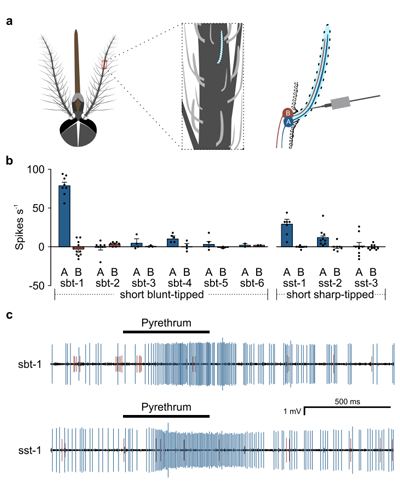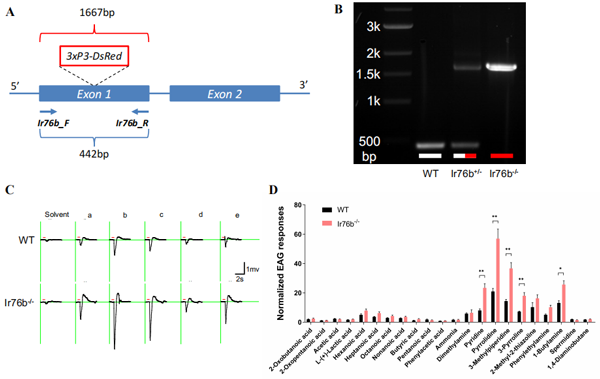
电话:+86-755-86967710
邮箱:webmaster@szbl.ac.cn

Institute of Infectious Diseases
liufeng(at)szbl.ac.cn
Vector Biology,Molecular biology,Neuroscience
Junior Principal Investigator
Staff Research Associate
Postdoctoral Research Scholar
Postdoctoral Research Scholar
Ph.D.
Master
Bachelor
Some hematophagous insects act as the vectors of human/animal pathogens, playing important roles in the disease transmission. The main focus of our lab is studying the interactions among the insects, hosts, and pathogens, deciphering the cell and molecular mechanisms behind these interactions, and developing new strategies and methods in the management of insect vector.
Dr. Feng Liu was supervised by Professor Nannan Liu at Auburn university and received his Ph.D. degree in Entomology. After that, he continued his research training in vector biology under the mentorship of professor Ke Dong at Michigan State University, professor Laurence Zwiebel at Vanderbilt University, and professor Omar Akbari at University of California San Diego. By integrating multi-technique approaches, such as single sensillum recording, Xenopus expression system, two-electrode voltage clamp, Drosophila transgenic expression system, and CRISPR/Cas9-based gene editing, he uncovered the cellular and molecular basis of odorant reception in several disease vectors. Dr. Liu has published 31 peer-reviewed articles (19 first-authored articles) in some renowned multidisciplinary research journals, such asNature Communications, Cell Reports, PNAS,and a wide variety of entomological journals, such asInsect BiochemistryandMolecular Biology, Frontiers in Physiology. Dr. Liu’s work has been supported by National Institute of Health (USA) and widely reported by multiple Chinese and English media, such as Scientific American, Science Daily, Sina, Tencent, and Netease.

Revealing the mechanism of pyrethrum’s repellency against Aedes aegypti:pyrethrum repels mosquito by activating olfactory sensory neurons in the mosquito antenna.

Null mutant of Ir76b mosquito presents enhanced neuronal responses to amines and insensitivity to blood. This study reveals that Ir76b gene acts an negative feedback in the neuronal responses evoked by amines and determines the blood perception of sensory neurons in the stylet of mosquitoes.
1.Feng Liu*, Iliano V Coutinho-Abreu*, Robyn Raban, Tam Thuy Dan Nguyen, Alejandra R Dimas, Joseph A Merriman, Omar S Akbari, (2024) Engineered skin microbiome reduces mosquito attraction to mice.PNAS Nexus, 3, 267.
2. Ye, Zi*,Feng Liu*, HuaHua Sun, Adam P. Baker, and Laurence J. Zwiebel. (2022) Discrete roles of the Ir76b ionotropic co-receptor impact olfaction, blood feeding, and mating in the malaria vector mosquitoAnopheles coluzzii.PNAS, 119, e2112385119.
3.Feng Liu*, Qiang Wang*, Peng Xu*, Felipe Andreazza, Wilson R. Valbon, Elizabeth Bandason, Mengli Chen, Ru Yan, Bo Feng, Leticia Smith, Jeffrey G. Scott, Genki Takamatsu, Makoto Ihara, Kazuhiko Matsuda, James Klimavicz, Joel Coats, Eugenio E. Oliveira, Yuzhe Du, Ke Dong. (2021) A dual-target molecular mechanism of pyrethrum repellency against mosquitoes.Nature Communications, 12, 2553.
4. Huahua Sun*,Feng Liu*, Adam Baker and Laurence J. Zwiebel. (2021) Neuronal odor coding in the larval sensory cone ofAnopheles coluzzii. complex responses from a simple system.Cell Reports, 36, 109555.
5.Feng Liu*, Zi Ye*, Adam Baker, Laurence J. Zwiebel. (2020). Gene editing reveals obligate and modulatory components of the CO2 receptor complex in the malaria vector mosquito,Anopheles coluzzii.Insect Biochemistry and Molecular Biology, 127, 103470.
Contact
Address: Gaoke Innovation Center,Guangming District, Shenzhen
Phone: +86-755-86967710
Email: webmaster@szbl.ac.cn
Postal Code: 518132
Copyright © 2025 Shenzhen Bay Laboratory. All Rights Reserved.